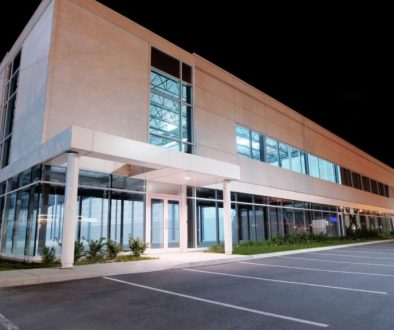Why Retail Spaces Remain Strong Investments
Investing in retail spaces offers a resilient opportunity amidst changing market dynamics. Explore why these investments remain strong.
Why Retail Spaces Remain Strong Investments
Retail spaces have historically been a cornerstone of real estate investment, providing not only a tangible asset but also a steady stream of income. Despite the rise of e-commerce and shifting consumer preferences, retail spaces continue to showcase resilience and adaptability. This blog post delves into the factors that contribute to the enduring value of retail investments, including market trends, consumer behavior, and the strategic advantages of physical retail locations. By the end, readers will gain a comprehensive understanding of why retail spaces remain a strong choice for investors looking to diversify their portfolios and secure reliable returns.
Introduction
The retail landscape has undergone significant transformation in recent years, driven largely by technological advancements and shifting consumer habits. However, as online shopping continues to rise, it is essential to recognize that physical retail locations still play a critical role in the marketplace. They provide consumers with experiences that digital shopping cannot replicate, such as immediate gratification and personal interaction. This article will explore the various reasons why retail spaces are valuable investments, addressing current trends, consumer preferences, and the overall economic environment that supports retail establishments.
Understanding the Resilience of Retail Spaces
- Market Adaptation: The retail sector has shown remarkable adaptability in response to challenges. For instance, many retailers have embraced omnichannel strategies, integrating physical locations with e-commerce platforms to enhance customer experiences. According to a report by the National Retail Federation, retailers that effectively combine online and offline strategies see significantly improved sales and customer loyalty.
- Consumer Preference for Experience: A substantial portion of consumers still prefer physical shopping experiences. Various studies indicate that shoppers enjoy the tactile experience of browsing products in-store, interacting with sales associates, and the social aspect of shopping with friends or family. This preference highlights the ongoing relevance of retail spaces.
- Local Market Dynamics: Retail spaces located in thriving neighborhoods or urban centers benefit from foot traffic and community support. Areas with high population density and diverse demographics often sustain retail environments longer than isolated or declining regions. This localized demand contributes to stable occupancy rates and rental income for investors.
The Role of Location in Retail Success
- Prime Real Estate: The age-old adage “location, location, location” holds true in retail. High-traffic areas near commercial hubs, public transport, or popular attractions naturally draw more customers. For instance, retail spaces in bustling city centers often command higher rents due to their prime positioning.
- Community Engagement: Retailers that actively engage with their communities tend to flourish. This includes hosting events, supporting local causes, and fostering an environment where consumers feel valued. Retailers who invest in their communities tend to see increased patronage, which translates to higher returns for investors.
- Accessibility: Easy access is critical to retail success. Well-connected retail spaces with ample parking or public transportation options attract more visitors, leading to increased sales. Investors must analyze transportation patterns and accessibility when evaluating potential retail investments.
The Impact of E-commerce on Retail Investments
- E-commerce Integration: The rise of online shopping has prompted many traditional retailers to adapt their business models. Rather than viewing e-commerce as a threat, savvy investors and retailers leverage technology to enhance in-store experiences. For example, implementing click-and-collect services allows customers to shop online while still utilizing physical locations.
- Showrooming and Experiential Retail: Physical retail spaces can serve as showrooms for products sold online. Customers can experience products in person before making purchases online, creating a hybrid model that bridges the gap between digital and traditional retail. Experiential retail—where customers engage in memorable experiences—has also become a trend. Retailers offering unique experiences often see heightened customer loyalty and increased visits.
- Data-Driven Decisions: Retailers are increasingly using data analytics to optimize their store locations and inventory management. By understanding consumer behavior through data, investors can make informed decisions about the types of retail spaces that are likely to succeed in a given environment.
Commercial Real Estate Trends Supporting Retail Investments
- Retail Recovery Post-Pandemic: The COVID-19 pandemic had a significant impact on the retail sector, but the recovery has been notable. Many consumers are returning to physical stores as restrictions ease, leading to a rebound in retail sales. According to reports from the U.S. Department of Commerce, retail sales have consistently shown positive growth, indicating a strong rebound in consumer confidence.
- Innovative Retail Formats: With changing consumer preferences, innovative retail formats such as pop-up shops and flexible leasing options are on the rise. These formats allow businesses to test markets and respond quickly to consumer demand without significant long-term commitments, which can be appealing for investors seeking to diversify their portfolios with minimal risk.
- Sustainability Trends: Environmentally conscious consumers are increasingly favoring brands that prioritize sustainability. Retail spaces that implement eco-friendly practices, such as energy-efficient designs or sustainable sourcing, are likely to attract a customer base that values corporate responsibility. Investors who focus on sustainable properties can benefit from potentially higher occupancy rates and long-term viability.
Best Practices for Investing in Retail Spaces
- Conduct Thorough Market Research: Before investing in retail, it’s crucial to perform comprehensive market research. Understanding local market dynamics, demographics, and consumer trends will help in identifying the most promising retail opportunities.
- Evaluate Tenant Strength: The success of retail investments largely depends on the strength and stability of tenants. Investors should assess tenant backgrounds, financial health, and growth potential to ensure reliable rental income.
- Diversify Your Portfolio: Diversification is key in any investment strategy. Consider investing in various retail types—such as restaurants, boutiques, and e-commerce integrated stores—to mitigate risks associated with market fluctuations.
- Adapt to Technology Changes: Stay abreast of technological advancements that can enhance retail experiences. Investing in properties equipped with smart technologies or those that accommodate innovative retail strategies can yield higher returns.
The Future Outlook for Retail Investments
- Evolving Consumer Preferences: The ongoing evolution of consumer preferences will likely continue to shape the retail landscape. Investors who are agile and able to adapt to these changes will position themselves for success in the future.
- Mixed-Use Developments: The trend towards mixed-use developments, which combine residential, commercial, and retail spaces, is gaining traction. These developments create vibrant communities that can enhance foot traffic, benefiting investors through higher sales and occupancy rates.
- Focus on Community-Centric Retail: As consumers become more community-oriented, retail spaces that foster local engagement and support local businesses will thrive. Investors should consider properties that embody this community spirit, ensuring alignment with consumer values.
Conclusion
In summary, retail spaces continue to be a resilient investment choice, bolstered by consumer preferences for physical shopping, strategic location advantages, and the integration of technology. Despite challenges posed by e-commerce, the retail sector has demonstrated remarkable adaptability and growth potential. Investors who leverage market trends, prioritize tenant quality, and embrace innovative retail formats will find substantial opportunities in the evolving landscape. As the retail environment continues to transform, those who remain informed and proactive will undoubtedly reap the rewards. Contact us today to explore our listings and begin your journey into retail investment.



